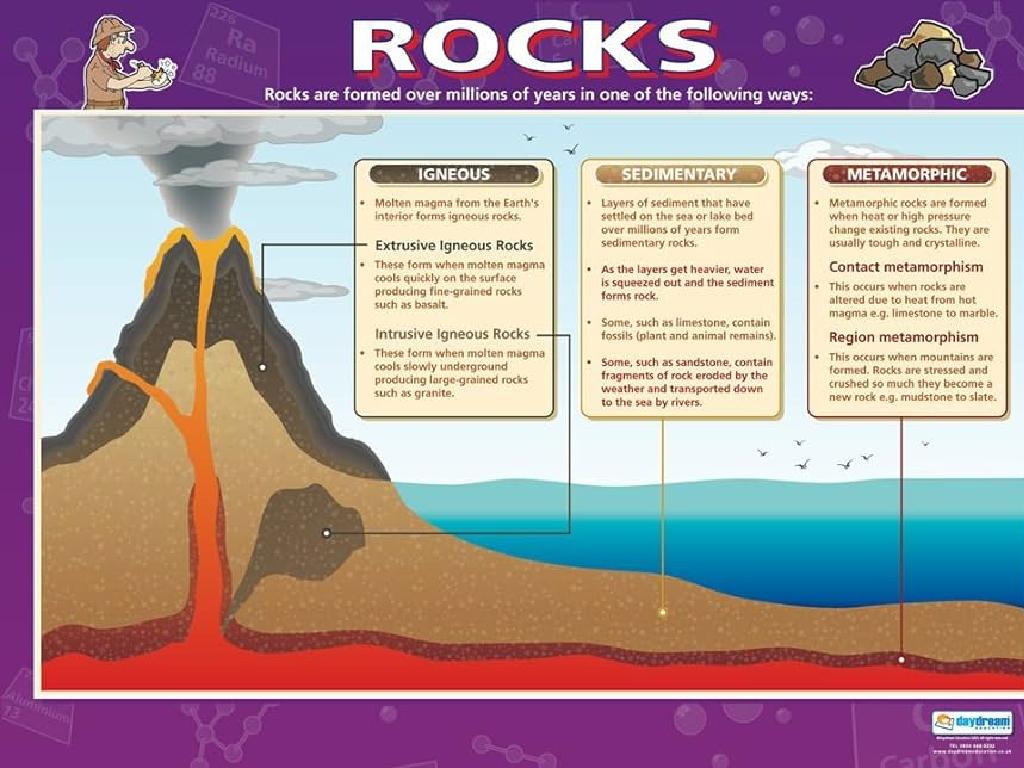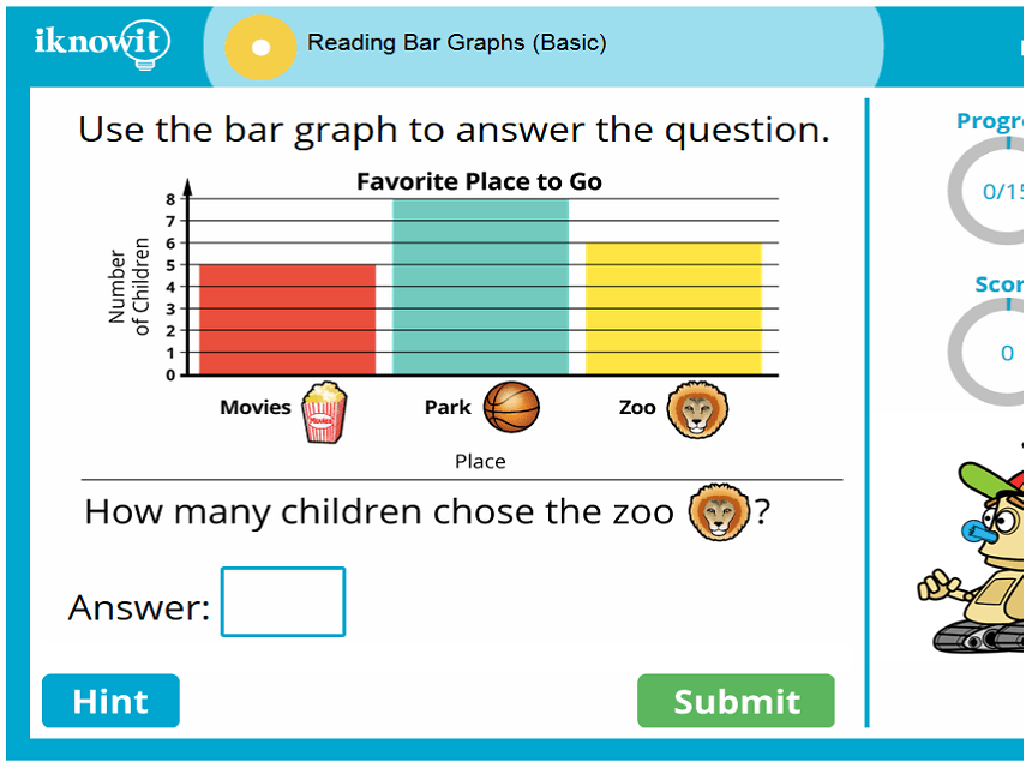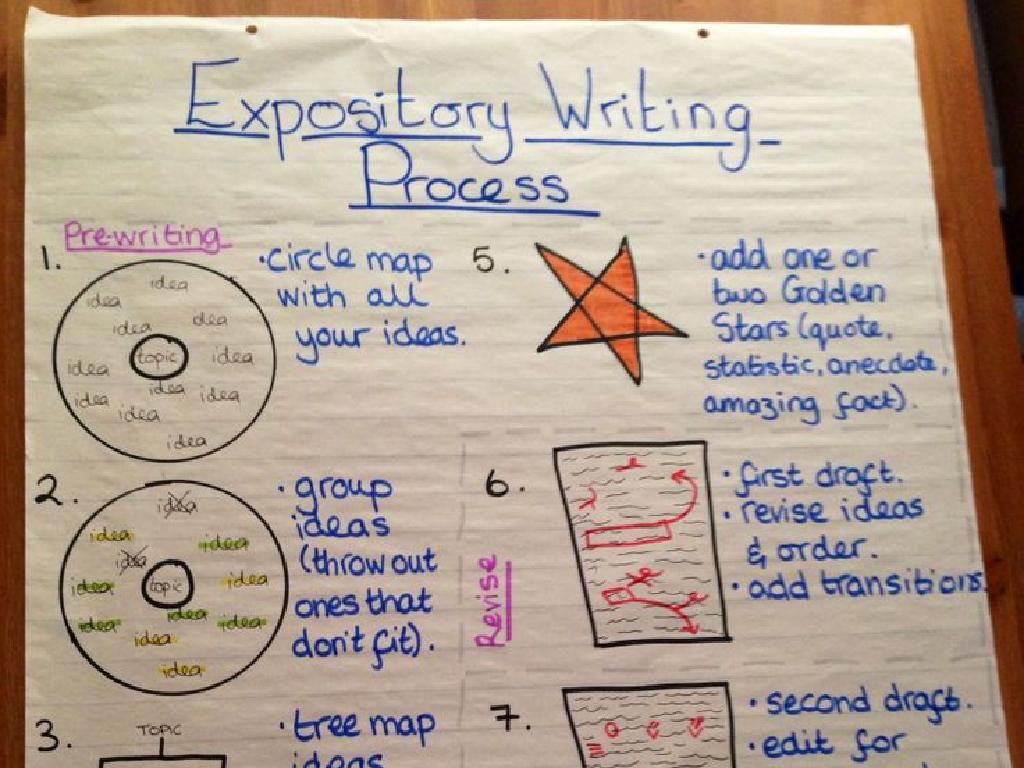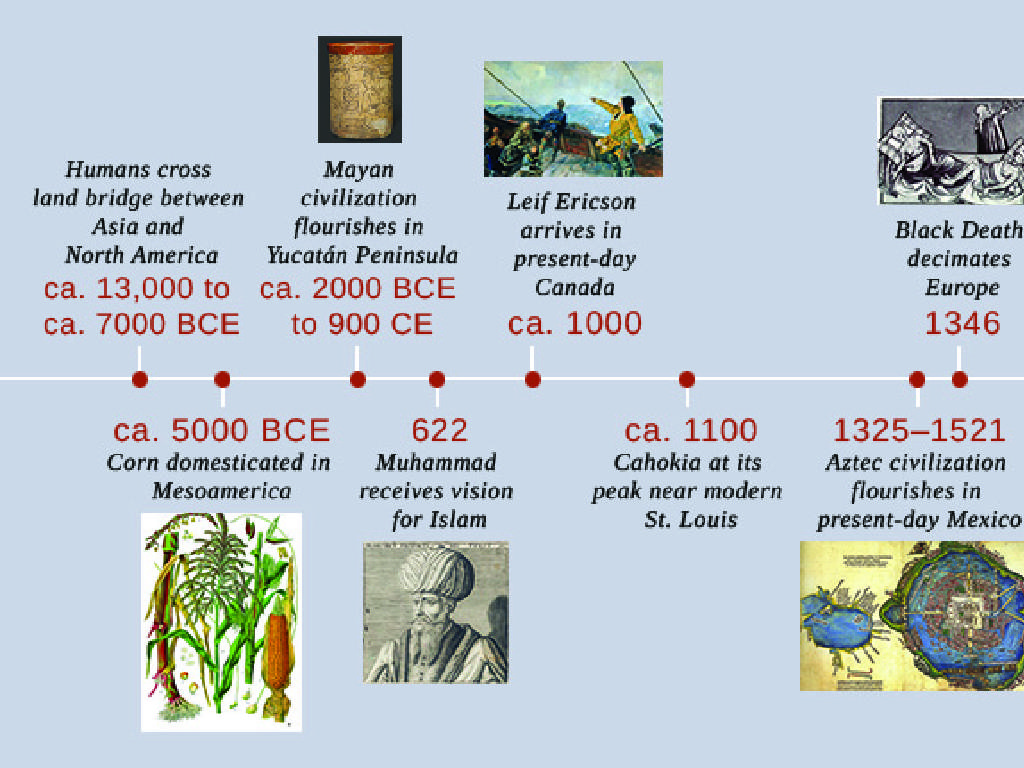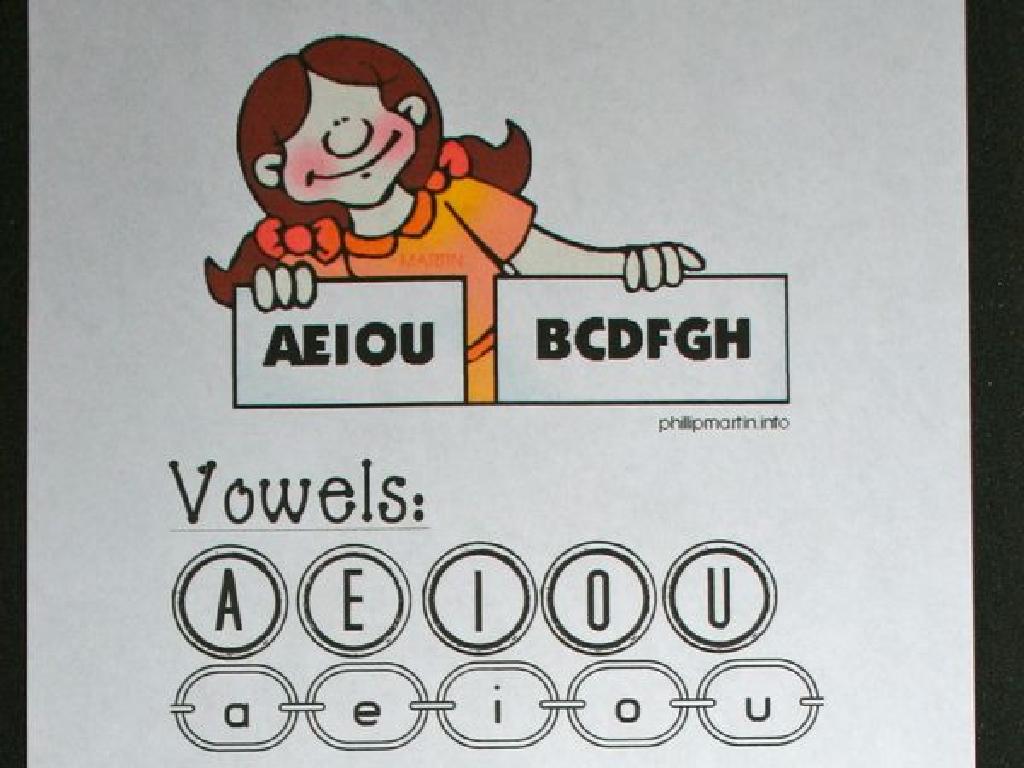Compose And Decompose Decimals In Multiple Ways
Subject: Math
Grade: Fifth grade
Topic: Decimal Place Value
Please LOG IN to download the presentation. Access is available to registered users only.
View More Content
Welcome to Decimal Place Value!
– Decimals: small but mighty
– Decimals represent fractions of whole numbers, like parts of a dollar.
– Decimals in daily life
– Used in money, measurements, and more, decimals are everywhere!
– Place value refresher
– Remember how each place has a value 10 times the place to its right?
– Extending place value to decimals
– Just like whole numbers, each decimal place has a value, but it gets 10 times smaller.
|
This slide introduces the concept of decimal place value by first highlighting the importance and omnipresence of decimals in everyday life, such as in currency and measurements. It then transitions to a brief review of place value for whole numbers, which is a foundation for understanding decimal place value. Emphasize that the same principles apply when extending place value to decimals, but instead of increasing by powers of ten, the value decreases, moving to the right of the decimal point. Encourage students to think of place value as a way to organize and understand numbers, both whole and decimal, to better grasp their significance in various contexts.
Understanding Decimals
– Definition of a decimal
– A decimal represents a part of a whole number
– Role of the decimal point
– A symbol used to separate whole numbers from parts
– Whole numbers vs. decimals
– Whole numbers are to the left, decimals to the right of the point
– Composing & decomposing decimals
– Break down or combine decimals using place value
|
This slide introduces the concept of decimals to fifth-grade students. Begin by defining a decimal as a way to represent fractions and parts of whole numbers using the base ten system. Explain the critical role of the decimal point in separating whole numbers from the fractional part. Highlight the difference between whole numbers and decimals, emphasizing that whole numbers are found to the left of the decimal point, while decimal fractions are to the right. Finally, discuss how to compose (put together) and decompose (break apart) decimals into smaller units or combine them into larger units using their place values, such as tenths, hundredths, and thousandths. Use visual aids and examples to help students grasp these concepts.
Exploring Decimal Place Values
– Understand tenths, hundredths, thousandths
– Places right of the decimal represent parts of a whole
– Each place value is 10 times smaller
– Moving right, each place is 1/10th of the previous
– Decimals in money and measurements
– Use prices and lengths to see decimals in action
– Practice with real-life examples
|
This slide introduces students to the concept of decimal place values, focusing on the tenths, hundredths, and thousandths places. Emphasize that as you move from left to right, each place value is ten times smaller than the one before it. Provide relatable examples such as money (e.g., $0.10, $0.01) and measurements (e.g., 1.5 meters, 0.75 liters) to illustrate the use of decimals in everyday life. Encourage students to bring in examples of items with price tags or measurements to discuss in class. This will help them understand and visualize how decimals are used and why each place value is important. The goal is to make them comfortable with the concept of decimals and their practical applications.
Composing Decimals
– Build decimals with place value
– Understand ones, tenths, hundredths
– Use zeros as placeholders
– Zeros hold the place in a decimal
– Example: Compose 3.47
– 3 ones, 4 tenths, 7 hundredths make 3.47
|
This slide introduces the concept of composing decimals, which is a fundamental part of understanding decimal place value. Students should use their knowledge of place value to build decimals accurately. Emphasize the importance of zeros as placeholders to maintain the correct value of each digit. For example, show how 3 ones (3), 4 tenths (0.4), and 7 hundredths (0.07) combine to form the decimal 3.47. Encourage students to practice with different combinations of ones, tenths, and hundredths to create various decimals. This will help solidify their understanding of how decimal numbers are structured and the role each digit plays in the overall value of the number.
Decomposing Decimals
– Break down decimals by place value
– 5.89 as 5 ones, 8 tenths, 9 hundredths
– Each digit’s role in the whole
– Digits to the left of the decimal are whole numbers, to the right are parts
– Example: Decompose 5.89
– 5 ones (5), 8 tenths (0.8), 9 hundredths (0.09)
|
This slide introduces the concept of decomposing decimals, which is a way to understand how each digit in a decimal number contributes to its total value. Students will learn to break down decimals into parts that represent ones, tenths, hundredths, etc. For example, the number 5.89 can be seen as 5 ones (the whole number part), 8 tenths (the first digit after the decimal point), and 9 hundredths (the second digit after the decimal point). This understanding is crucial for grasping more complex decimal operations. Encourage students to practice with different numbers and to visualize the breakdown using place value charts if necessary.
Composing & Decomposing Decimals
– Multiple methods for decimals
– Decimals can be broken down or combined in various ways.
– Addition composes decimals
– Combine parts to form a whole, like 0.3 + 0.4 = 0.7.
– Subtraction decomposes decimals
– Break down a number into smaller parts, like 0.5 – 0.2 = 0.3.
– Let’s practice with examples
– Work through examples as a class to understand better.
|
This slide introduces the concept of composing and decomposing decimals, emphasizing that there are multiple methods to do so. When composing decimals, we’re essentially adding values to create a new number. Conversely, decomposing involves breaking down a decimal into its constituent parts through subtraction. It’s crucial to provide practice examples for the class to ensure students can apply these concepts. Encourage students to think of decimals as a sum or difference of their parts and to explore different combinations and decompositions. During the class, work through several examples together and then allow students to try their own, fostering a hands-on understanding of the topic.
Let’s Practice Together: Composing & Decomposing Decimals
– Class activity on decimals
– Work in pairs for compositions
– Partner up and pick a decimal to compose in different ways
– Find various decompositions
– How many ways can you break down your decimal?
– Share methods with the class
– Discuss the different strategies used in your pairs
|
This slide introduces a collaborative class activity focused on composing and decomposing decimals. Students should be paired up and given a set of decimals to work with. They will explore different ways to compose (build) and decompose (break down) these decimals using their knowledge of place values. Encourage them to think creatively and find multiple methods for decomposition. After the activity, facilitate a discussion where pairs can share their findings and the strategies they used. This will help students understand that there can be multiple ways to compose and decompose decimals, reinforcing their understanding of decimal place value. Possible activities: 1) Compose decimals using money concepts, 2) Decompose by separating into whole numbers and fractional parts, 3) Use base-10 blocks to visualize composition and decomposition, 4) Write decimals in expanded form, 5) Create a number line to show the decomposition of decimals.
Decimals in Daily Life
– Decimals in shopping
– Compare prices, calculate discounts, and manage budgets using decimals.
– Reading bills and receipts
– Understand total costs and how sales tax is added to your purchases.
– Measuring for cooking
– Use decimals to measure ingredients accurately for recipes.
– Importance of decimal accuracy
|
This slide aims to show students the practical applications of decimals in everyday life. When shopping, decimals are crucial for handling money, especially when dealing with prices, discounts, and budgeting. Bills and receipts often include decimals, and understanding them is key to knowing what you’re paying for and why. Cooking and baking are great examples of decimals in action, as precise measurements are necessary for the desired outcome. Emphasize the importance of accuracy with decimals, as small errors can lead to significant differences in these real-life situations. Encourage students to bring examples from their experiences where they’ve encountered decimals, and discuss how understanding decimal place value helped them.
Class Activity: Decimal Scavenger Hunt
– Find items with decimal quantities
– Compose decimals from items
– Combine parts to form a decimal
– Decompose item decimals
– Break down decimals into parts
– Present findings to class
|
This interactive activity is designed to help students understand decimals by finding real-life examples in the classroom. Students will search for items that can be quantified with decimals, such as rulers showing centimeters and millimeters, or weights of objects if a scale is available. They will then practice composing decimals by combining parts to form a whole number with a decimal and decomposing by breaking down a decimal into its constituent parts. Encourage students to think creatively and consider various items that might have decimal quantities. After the scavenger hunt, each student will have the opportunity to present their findings, explaining how they composed and decomposed the decimals. This will reinforce their understanding and allow for peer learning. Possible activities include measuring lengths, weighing objects, counting money, or determining time in hours and minutes.
Wrapping Up: Decimals in Daily Life
– Recap: composing/decomposing decimals
– Decimals’ role in everyday life
– Decimals in shopping, banking, measurements
– Homework: Decimal worksheet
– Complete worksheet to reinforce today’s lesson
– Practice makes perfect!
|
As we conclude today’s lesson, remind students of the key concepts of composing and decomposing decimals. Emphasize how decimals are not just a part of math class but are used in daily activities like shopping, banking, and measuring. For homework, assign a worksheet that includes a variety of problems to practice composing and decomposing decimals. This will help solidify their understanding and prepare them for more complex math concepts. Encourage students to approach the worksheet with a positive mindset, reinforcing the idea that practice is essential for mastery.

